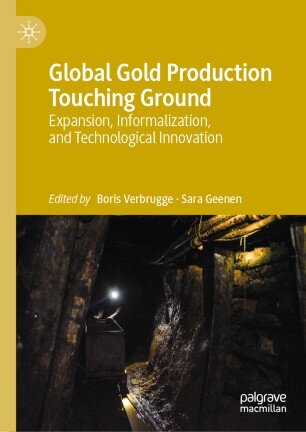Global gold production touching ground
Through country case studies, this project seeks to understand how the global gold production system 'crystallizes' in particular places. More precisely, the case studies analyze how the structural trends of global expansion, informalization, and technological innovation come together and intersect with ecological and institutional structures; giving rise to particular sets of mining activities.
The focus of the InForMining project is on Peru, the DRC, and the Philippines. In addition, we invited other scholars to contribute case studies to the edited volume Global Gold Production Touching Ground. Short case descriptions and video presentations of the book chapter can be found here.

Philippines
While the history of gold mining in the Philippines dates back to precolonial times, gold mining really took off when the United States 'liberated' the country from the Spanish. What started off with prospecting activities undertaken by American soldiers gradually evolved into a corporate gold mining industry, which initiated operations across the archipelago. While the decades after the second World War were widely seen the 'golden era' of Philippine mining, by the 1980s the mining industry fell into disarray. This would provide the space necessary for an expansion of ASGM, as both labor, technology, and capital shifted from industrial gold mining to small, flexible, and informal gold mining activities. Over time, thanks to increased investment and the regulatory tutelage of local 'miner-politicians', ASGM has expanded well beyond subsistence level. Still, it continues to revolve around the exploitation of cheap informal workers, who are integrated in complex revenue-sharing mechanisms that favor those with access to capital.
DR Congo
The DRC has a history of both industrial large-scale mining (colonial and postcolonial) and artisanal and small-scale mining. Artisanal and small-scale gold mining boomed in the 1980s, and formed the heart of a "war economy" in the 1990s. Since about 2008, regulatory reforms have made attempts to formalize artisanal and small-scale mining and set up so-called conflict-free mineral supply chains. Yet in practice, almost all gold is still produced and traded informally. Informality, we argue, is useful to the global gold production system. The system relies on cheap, flexible labour, and a state apparatus that takes a step back from its regulatory and distributional obligations. At the same time our work shows how artisanal and small-scale gold mining and industrial gold mining evolve together and in response to one another.
Colombia
The Colombian government, while targeting its regulatory reforms towards foreign direct investment in large-scale mining, has created more ambiguity around ASGM. At the same time, it has created what we call legal loopholes, which allow different actors in the gold trading chain to benefit from vacuums or ambiguities within the law. In this process, international distributors, intermediaries and public servants benefit most as they manage to buy and sell large volumes of illegally mined gold, and legalize this.
Ghana
Like the Philippines, Ghana has seen consecutive phases of expansion and contraction in its century-old gold mining history. Yet recent years have witnessed a spectacular expansion of informal Galamsey gold mining, which is driven in part by the involvement of Chinese investors (and workers), and by state complicity at the local, regional, and arguably even the national level.
Burkina Faso
Following the liberalization of its mining policies in the 1990s, Burkina Faso became a favored destination for risk-seeking junior mining firms. As of today, the country is home to at least 10 industrial gold mines. At the same time, the country has a much longer history of ASGM. In recent years, ASGM has witnessed important technological transformations, epitomized by the advent of cyanidation. Increasingly, industrial gold mining and ASGM interact, with the outcomes depending on local sociopolitical conditions and the stage of the mining cycle.
Brazil
ASGM, which is known locally as garimpagem, is the historically dominant form of gold mining in Brazil, and has expanded spectacularly since the 1980s. The comparative advantage of ASGM lies in its flexibility, which allows it to operate under different political and economic constellations, and to penetrate ever-deeper into the remote Amazone region. While remaining largely informal, the Brazilian state is characterized by a highly ambiguous stance vis-à-vis ASGM, which is a reflection of- but also a causal explanation for its success.
Madagascar
Despite repeated attempts on the part of the Malagasy state and foreign investors to reign in on ASGM, ASGM-operators and the networks they form part of remain a formidable force in the island's political economy. More recently, we have seen increased interest on the part of Chinese investors that conclude shady deals with local politicians and ASGM-operators.
Uganda
Uganda is truly a new gold mining destination, in that it has no established history of gold mining. Yet in recent years, both industrial gold mining and ASGM are on the rise, and are becoming increasingly integrated into the country's political economy. So far, however, the golden promise of meaningful improvements in people's livelihoods remains an elusive one.
Indonesia
Much in line with the situation in several other new gold mining destinations, the ongoing expansion of ASGM fits in with successive boom-bust cycles in the nation's gold mining history. The advent of cyanide processing is rapidly changing the face of ASGM, and is having profound consequences for the social division of labor.